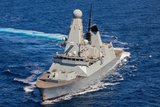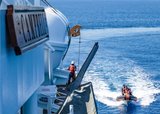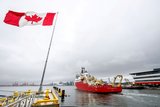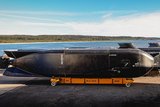USCG orders seven RB-S IIs
The US Coast Guard has issued an order worth around $3 million to Metal Shark Boats for the supply of seven response boats-small II (RB-S II), the agency announced on 3 October.
Delivery is expected to start in spring 2019. The boats will be primarily stationed in the Seattle, Washington area.
The 29ft RB-S IIs have a maximum speed of over 40kt and will be used for a range of missions including SAR, vessel boarding team deployment and law enforcement missions, port security, drug and migrant interdiction and environmental response operations.
This new order brings the total number of RB-S IIs ordered to date to 350; 318 have been delivered. RB-S IIs are gradually replacing the 25ft RB-S.
More from Naval Warfare
-
![How the use of artificial intelligence will affect the US Coast Guard’s acquisitions]()
How the use of artificial intelligence will affect the US Coast Guard’s acquisitions
The USCG is pursuing AI tools to improve the way the service conducts its procurement and fielding processes.
-
![US Coast Guard pursues solutions to increase maritime domain dominance]()
US Coast Guard pursues solutions to increase maritime domain dominance
The USCG is seeking technologies, services and applications to better connect its assets and speed up the decision-making process.
-
![Canadian Coast Guard’s OOSV delivery is “major milestone” in fleet modernisation]()
Canadian Coast Guard’s OOSV delivery is “major milestone” in fleet modernisation
The Polar Class 6 platform is the largest CCG science-dedicated vessel and will operate on the country’s east coast.
-
![How the Anduril-HHI autonomous ship plan fits in with the US Navy’s MASC programme]()
How the Anduril-HHI autonomous ship plan fits in with the US Navy’s MASC programme
The new modular vessel is expected to be developed for both commercial and defence use, with a heavy focus on production speed and mission flexibility.






















